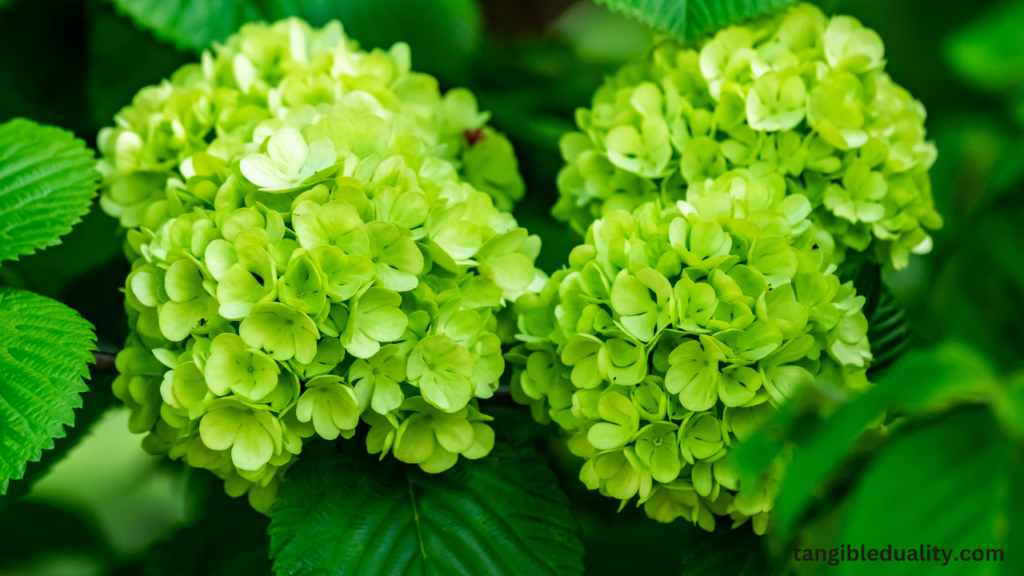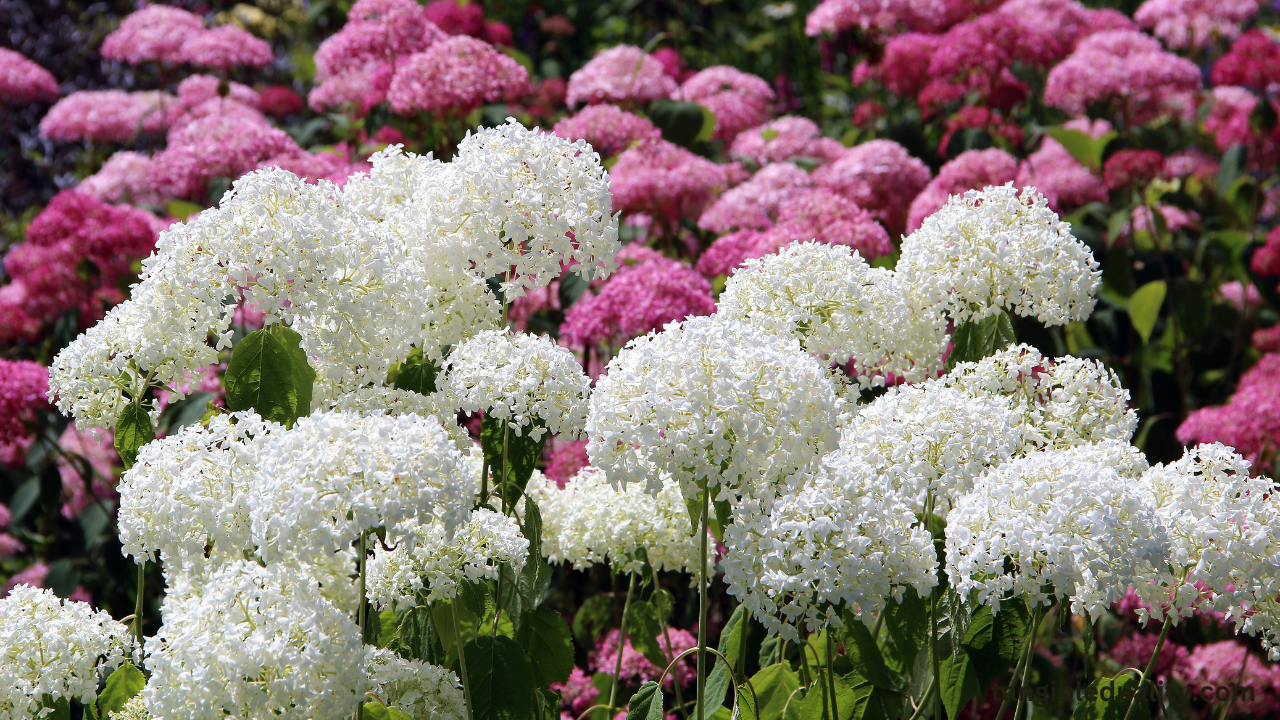Hydrangeas, with their hypnotic flowers and verdant foliage, are crucial components that should be included in any garden or landscape design. However, to guarantee their utmost health and vitality, it is necessary to pay close attention to their nutrient requirements.
Nitrogen is one among these elements that stands out as exceptionally important because it is necessary for robust development and prolific flowering. On the other hand, hydrangeas can experience a decline in their growth and vitality if they do not receive enough nitrogen. This can be seen in the form of yellowing leaves, stunted growth, and decreased flower production.
Within the scope of this all-encompassing guide, we look into a multitude of efficient home remedies to manage nitrogen deficiency in hydrangeas. This provides gardeners with the ability to cultivate plants that are flourishing and with brilliant blooms.

Understanding Nitrogen Deficiency in Hydrangeas
Nitrogen, one of the primary macronutrients essential for plant growth, plays a pivotal role in hydrangea health and development. It facilitates crucial processes such as chlorophyll production, photosynthesis, and protein synthesis, all of which are vital for robust foliage and prolific blooming.
When nitrogen levels in the soil are insufficient, hydrangeas exhibit various symptoms indicative of nutrient deficiency, including pale or yellowing leaves, reduced foliage density, and sparse flower clusters. Recognizing these signs early allows gardeners to take proactive measures to rectify nitrogen deficiency and promote optimal plant growth.
Home Remedies to Address Nitrogen Deficiency
Compost Application
Composting represents a sustainable and practical approach to replenishing nitrogen levels in soil depleted of this essential nutrient. Compost, derived from organic matter such as kitchen scraps, yard waste, and plant debris, serves as a nutrient-rich soil amendment that gradually releases nitrogen into the soil.
By incorporating compost around the base of hydrangea plants, gardeners not only address nitrogen deficiency but also enhance soil structure and microbial activity, fostering a healthy growing environment.
Coffee Grounds
Used coffee grounds present a readily available source of nitrogen that can be harnessed to boost soil fertility and promote hydrangea growth. Rich in organic matter and nitrogen compounds, coffee grounds contribute to soil enrichment and microbial activity, ultimately benefiting plant health.
Sprinkle coffee grounds around the root zone of hydrangeas, taking care to avoid direct contact with the stems, and allow them to decompose gradually, releasing nitrogen into the soil over time.

Organic Fertilizers
Organic fertilizers offer a natural and balanced approach to supplementing nitrogen levels in hydrangea soil without the risk of chemical imbalances or environmental harm.
Materials such as composted manure, bone meal, blood meal, and fish emulsion provide a steady source of nitrogen and other essential nutrients, supporting healthy growth and flowering.
Apply organic fertilizers according to package instructions, typically in early spring or late fall, to coincide with the plant’s active growth phases and maximize nutrient uptake.
Mulching
Mulching serves as a multifaceted solution to nitrogen deficiency, simultaneously conserving soil moisture, suppressing weed growth, and enhancing soil fertility.
Organic mulches, including shredded leaves, grass clippings, and wood chips, gradually decompose, releasing nitrogen and other nutrients into the soil while improving soil structure and aeration.
Apply a layer of mulch around hydrangea plants, maintaining a gap around the stems to prevent rot and fungal diseases, and replenishing it periodically to sustain its beneficial effects.
Legume Cover Crops
Integrating leguminous cover crops into the garden landscape presents a natural and sustainable means of augmenting nitrogen levels in the soil.
Plants such as clover, vetch, and peas possess the unique ability to fix atmospheric nitrogen through symbiotic relationships with nitrogen-fixing bacteria in their root nodules.
By incorporating legume cover crops into the garden rotation, gardeners can harness this nitrogen-fixing capacity to enrich the soil and support the growth of nitrogen-demanding plants like hydrangeas.
Urine Fertilization
While unconventional, urine fertilization offers a potent source of nitrogen that can nourish hydrangeas and other garden plants. Dilute urine with water at a ratio of 10 parts water to 1 part urine to mitigate potential salt buildup and minimize the risk of nitrogen burn.
Apply the diluted urine solution to the soil around hydrangeas, preferably during the plant’s active growth phases, to facilitate nutrient absorption and promote vigorous growth. Exercise caution when utilizing urine fertilization to avoid overapplication and maintain soil balance.
Conclusion
Hydrangeas face a big obstacle to their health and vitality when they are deficient in nitrogen, which affects their growth, the density of their foliage, and the number of flowers they produce.
Nevertheless, gardeners can efficiently treat nitrogen deficiency and nurture robust hydrangea plants with lush foliage and plentiful blooms by utilizing a combination of natural home remedies.
Natural home remedies can be found in a variety of forms. It is possible to improve soil fertility and encourage optimal plant growth using a variety of methods, including composting, organic fertilizers, mulching, legume cover crops, and urine fertilization. Each of these methods provides a sustainable and environmentally beneficial option.
Gardeners can appreciate the beauty and magnificence of healthy and vibrant hydrangeas in their garden settings for many years to come if they grasp the significance of nitrogen and adopt these home treatments.
FAQs
Q: Can I grow tomatoes indoors without natural sunlight?
Answer: Yes, you can grow tomatoes indoors using grow lights specifically designed to mimic natural sunlight. Ensure they receive adequate light for about 10-14 hours per day for optimal growth.
Q: What is companion planting, and how can it benefit my garden?
Answer: Companion planting involves strategically placing compatible plants near each other to maximize growth and deter pests. For example, planting basil near tomatoes can enhance flavor and repel pests like aphids and mosquitoes.
Q: How can I prevent blossom end rot in my peppers?
Answer: Blossom end rot in peppers is often due to calcium deficiency or irregular watering. To prevent it, maintain consistent watering, provide adequate calcium through soil amendments like gypsum or lime, and mulch to regulate soil moisture.
Q: Is it possible to propagate succulents from leaf cuttings?
Answer: Yes, many succulents can be propagated from leaf cuttings. Simply select healthy leaves, let them callus over for a few days, then place them on well-draining soil. With time and proper care, new roots and shoots will develop.
Q: What are the benefits of using raised garden beds?
Answer: Raised garden beds offer numerous benefits, including improved soil drainage, better control over soil quality, reduced weed growth, and easier access for planting, watering, and harvesting. Additionally, they can extend the growing season in cooler climates.

